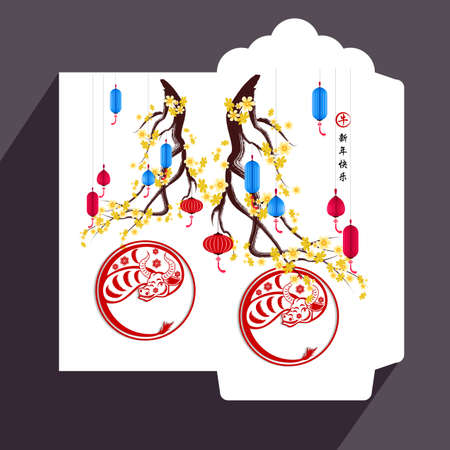1. Understanding Feng Shui in the Modern American Context
Feng Shui, an ancient Chinese philosophy that focuses on harmonizing people with their environments, has found a unique place in modern American life. However, as it’s crossed cultures, some of its original principles have been adapted, simplified, or even misunderstood. In today’s U.S., Feng Shui is often associated with interior decorating tips—especially when it comes to color choices—but it’s much more than just picking paint swatches. Let’s explore what Feng Shui really means for Americans and how its color rules have both influenced and been reshaped by local culture.
What Is Feng Shui?
At its core, Feng Shui is about balancing energy (known as “Qi” or “Chi”) within a space to promote well-being and prosperity. Traditionally, it considers factors like direction, natural elements, light, and yes—color. In China, every color carries symbolic meaning and is connected to one of the five elements: Wood, Fire, Earth, Metal, and Water.
How Americans Interpret Feng Shui
In the United States, Feng Shui has become a popular buzzword among homeowners and designers. Many people use it as a guide for creating peaceful homes or successful offices. Yet, certain beliefs—like which color to paint your front door for good luck—have sometimes strayed from authentic tradition and turned into urban legends.
Common Ways Feng Shui Has Been Adapted in America
| Traditional Feng Shui Principle | American Interpretation | Possible Misunderstanding |
|---|---|---|
| Colors represent five elements and balance energy | Certain colors guarantee wealth or happiness | Overemphasis on specific colors without considering full context |
| Placement of furniture and objects is key | Buying “lucky” items regardless of placement | Objects alone can’t fix poor layout or energy flow |
| Customization based on individual needs and compass directions | Universal rules apply to everyone everywhere | Lack of personalization may lead to ineffective results |
The Role of Color: Guidelines vs Urban Legends
Color is one area where American interpretations have especially diverged from traditional Feng Shui. For example, you might hear that painting your front door red will always bring prosperity—a statement rooted in some truth but not universally accurate. In reality, the right color depends on various factors like your home’s orientation and personal birth element.
Why It Matters Today
Understanding the difference between real Feng Shui guidelines and urban legends helps Americans make better choices for their spaces—choices that are meaningful rather than just trendy. As we dig deeper into color rules in the next sections, keeping this cultural context in mind will help separate fact from fiction.
2. The Core Color Principles of Authentic Feng Shui
When it comes to Feng Shui, color is much more than just decoration—it’s about supporting positive energy (Qi) and well-being in your living or working space. Let’s break down the real color guidelines from classical Feng Shui traditions and understand what these colors are supposed to do for you.
The Five Elements and Their Colors
Feng Shui uses the “Five Elements” system, which connects certain colors with natural elements. Each element has its own energy and influence on your environment. Here’s a quick guide:
| Element | Main Colors | Associated Energy/Impact |
|---|---|---|
| Wood | Green, Blue | Growth, vitality, new beginnings, family harmony |
| Fire | Red, Strong Orange, Purple | Passion, excitement, fame, inspiration |
| Earth | Yellow, Light Brown, Sandy Beige | Stability, nourishment, grounding, support |
| Metal | White, Gray, Metallics (Silver/Gold) | Clarity, focus, efficiency, precision |
| Water | Black, Deep Blue | Wisdom, calmness, flow, career opportunities |
How Colors Are Used in Feng Shui Spaces
The main idea is to use these colors in ways that balance the energy of a room or area according to its function and direction. For example:
- Living rooms: Earth tones (like soft yellows and beiges) help create a grounded and welcoming atmosphere.
- Home offices: Whites and metallics encourage clear thinking and productivity.
- Bedrooms: Soft greens or blues from the Wood element promote restful sleep and growth.
- Kitchens: Touches of red can add warmth and vitality but should be used in moderation to avoid overstimulation.
- Main entrances: Black or deep blue from the Water element symbolizes flow and welcoming new opportunities.
Avoiding Common Misconceptions About Color in Feng Shui
You might hear urban legends like “Never use red in the bedroom” or “Always paint your front door red for luck.” In authentic Feng Shui practice, there’s no one-size-fits-all rule—colors need to match your home’s energy map (Bagua), your personal goals, and your taste. It’s about balance and intention rather than strict dos or don’ts.
Your Takeaway: Use Color as a Tool for Balance and Well-Being
The true role of color in Feng Shui isn’t superstition—it’s about creating spaces that support your energy and life goals. By understanding the basic principles above, you can start using color thoughtfully to boost positivity and harmony in any American home or office.

3. Popular Feng Shui Color Myths in the U.S.
How Feng Shui Color Myths Spread in America
In the U.S., Feng Shui color advice often gets mixed with local beliefs, pop culture trends, and social media tips. While some guidance is based on real Feng Shui principles, a lot of it comes from urban legends or oversimplified home decor rules. Let’s look at some common myths about Feng Shui colors that are popular on American blogs, Instagram posts, and TV shows.
Common Misconceptions About Feng Shui Colors
| Myth | What People Say | The Truth |
|---|---|---|
| Red Brings Instant Luck | Paint your front door red for good fortune—no exceptions! | While red is lucky in Chinese culture, it’s not a universal fix. The “right” color depends on your house’s direction and surroundings. |
| Green Means Money Everywhere | Add green to any room to attract wealth. | Green relates to growth and healing, but wealth activation depends on where you use the color and your homes layout—not just using green anywhere. |
| Black Attracts Bad Energy | Avoid black paint and décor or you’ll invite negativity. | Black actually represents water and wisdom in Feng Shui; it can be beneficial if balanced properly, especially in career areas. |
| Purple Is Always Spiritual | Purple brings spiritual energy no matter how you use it. | Purple is powerful but should be used thoughtfully, as too much can feel overwhelming or unbalanced depending on the space. |
| White Is Neutral Everywhere | You can’t go wrong with all-white rooms—they’re always good Feng Shui. | White stands for clarity and purity, but too much may feel cold or isolating unless warmed up with other elements. |
The Role of Social Media & Pop Culture in Shaping Beliefs
Platforms like TikTok, Pinterest, and home renovation TV shows often feature “Feng Shui hacks” that promise instant results by changing wall colors or adding certain colored pillows. These quick tips usually ignore deeper Feng Shui concepts like balancing the five elements (wood, fire, earth, metal, water) or considering the Bagua map—a traditional energy blueprint used by real practitioners. In reality, effective Feng Shui is about harmonizing your space based on its unique energy flow, not just copying trendy color palettes you see online.
4. Incorporating Feng Shui Colors in the American Home
Bringing Feng Shui color principles into your American home doesn’t mean you have to follow traditional Chinese decor or use colors that feel out of place. The key is blending authentic Feng Shui guidelines with what works for your lifestyle, local tastes, and architecture. Here’s how you can use Feng Shui-approved colors in a way that feels natural and welcoming in a modern American setting.
Understanding the Five Elements and Their Colors
Feng Shui uses five elements—Wood, Fire, Earth, Metal, and Water—each associated with certain colors. These elements can be balanced throughout your home to support harmony and positive energy. Here’s a quick reference:
| Element | Associated Colors | Best Rooms/Spaces |
|---|---|---|
| Wood | Green, Brown | Living room, Home office |
| Fire | Red, Orange, Purple, Pink | Dining room, Entertainment spaces |
| Earth | Yellow, Beige, Earthy tones | Kitchen, Entryway, Family room |
| Metal | White, Gray, Metallics | Home office, Kids’ rooms |
| Water | Blue, Black | Bathroom, Meditation space |
Selecting Feng Shui Colors for American Homes
Work With Your Existing Decor Style
You don’t need to paint every wall bold red or emerald green. Instead, bring in Feng Shui colors through accents like pillows, rugs, artwork, or even fresh flowers. For example: if your living room is mostly neutral (a popular American style), add green throw pillows or a plant for Wood energy without overwhelming the space.
Respect Architectural Features and Light
Many American homes have open floor plans or lots of windows. Use lighter versions of Feng Shui colors to keep things bright and airy. Earthy tones like beige or light yellow work well as main wall colors and create a grounded feeling without clashing with modern designs.
Create Balance—Don’t Overdo It!
The goal is harmony. Too much of one color (like an all-red dining room) can feel intense. Mix and match elements; for example, pair blue (Water) bathroom tiles with wood shelves (Wood element) to keep the space balanced.
Easy Ways to Add Feng Shui Colors:
- Pillows & Throws: Swap seasonally for different energies.
- Artwork: Choose pieces featuring Feng Shui-friendly colors.
- Curtains & Rugs: A subtle way to introduce new hues.
- Plants: Bring Wood energy and vibrant greens into any room.
- Lamps & Accessories: Gold metal lamp for Metal element; blue vase for Water element.
Avoiding Common Misconceptions in Color Use
You might hear myths like “never use black in the bedroom” or “red front doors are always lucky.” In reality, color choices should fit your personal taste and architectural style. For example: black can be calming in moderation (like bedding accents), while a red door works best if it suits your home’s exterior palette and faces the right direction per Feng Shui guidelines.
5. Balancing Authenticity and Personal Style
When exploring Feng Shui’s color rules, it’s common to wonder how you can respect authentic principles while making your space feel like “you.” The good news? You don’t have to choose between tradition and your personal style. With a thoughtful approach, you can blend classic Feng Shui guidelines with modern American tastes—creating a home that feels both balanced and uniquely yours.
Understanding Core Feng Shui Color Principles
Feng Shui organizes colors by the Five Elements: Wood, Fire, Earth, Metal, and Water. Each element is tied to specific colors and areas of life. Here’s a quick cheat sheet:
| Element | Main Colors | Symbolism |
|---|---|---|
| Wood | Green, Brown | Growth, vitality, flexibility |
| Fire | Red, Orange, Purple | Passion, energy, visibility |
| Earth | Yellow, Beige, Earthy tones | Stability, nourishment, support |
| Metal | White, Gray, Metallics | Clarity, precision, efficiency |
| Water | Blue, Black | Wisdom, flow, communication |
Merging Tradition with Modern American Trends
You don’t need to fill your living room with red just because Fire symbolizes energy. Instead, try these tips to make Feng Shui work for you:
- Select Accent Pieces: Use traditional colors in smaller doses—think pillows or artwork—to keep things subtle but effective.
- Create Layered Palettes: Mix classic Feng Shui hues with popular American neutrals or trending tones like soft sage or warm terracotta.
- Add Your Personality: If you love bold patterns or specific shades outside the traditional list, incorporate them thoughtfully. A pop of teal or a favorite family heirloom can coexist with Feng Shui principles.
- Stay Flexible: Remember that feeling comfortable and happy in your space matters as much as following any rulebook. Let your intuition guide you alongside the guidelines.
Sample Living Room Color Combinations (Inspired by Feng Shui & American Style)
| Main Element/Color Focus | Modern Complementary Tones | How It Feels in an American Home |
|---|---|---|
| Wood / Green Accents | Cream walls + tan leather + plants + gold decor | Lively yet grounded; fresh and welcoming |
| Fire / Red Touches | Navy sofa + red throw blanket + white trim + art prints | Energizing but not overwhelming; stylish contrast |
| Earth / Yellow & Beige Base | Pale yellow paint + natural wood + blue accessories | Warm and cozy; relaxed sophistication |
Your Unique Blend: Tips for Personalizing Further
- Edit Regularly: Swap out accessories seasonally or as your mood changes—Feng Shui encourages movement and renewal.
- Add Meaningful Objects: Personal photos or souvenirs bring positive energy that’s unique to you.
- Create Balance: Balance bold colors with calming neutrals to avoid visual chaos.
The key is to let authentic Feng Shui principles inspire your choices—not restrict them. By blending tradition with what feels right for you and fits today’s American design trends, you create a living space that supports both harmony and self-expression.


